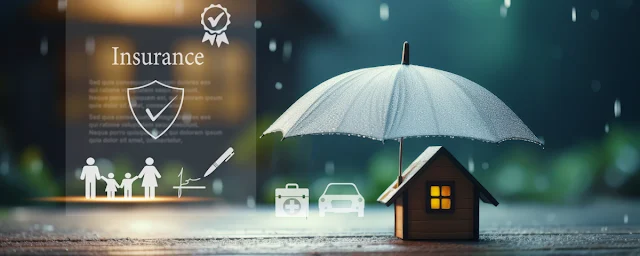How Much Homeowners Insurance Do I Need?
Your home is likely your most valuable asset—and protecting it is a financial priority. One of the most common yet critical questions homeowners face is: “How much homeowners insurance do I need?”
While your mortgage lender may require a minimum level of coverage, that may not be enough. The right policy should not only meet requirements but also provide true protection in case of a disaster. From rebuilding costs to replacing your belongings, proper coverage offers peace of mind.
This guide walks you through how to determine your ideal homeowners insurance coverage and ensure you're financially shielded against unexpected events.
Understanding What Homeowners Insurance Covers
Homeowners insurance is designed to protect you from financial loss due to damage, theft, or liability issues. Most standard policies include these core components:
1. Dwelling Coverage
This covers the physical structure of your home. It should reflect the full cost of rebuilding your home, not the market value.
2. Other Structures Coverage
Includes detached garages, fences, sheds, or gazebos.
3. Personal Property Coverage
Protects belongings inside your home like furniture, electronics, and clothing.
4. Liability Protection
Covers legal fees and medical bills if someone is injured on your property.
5. Additional Living Expenses (ALE)
Pays for temporary housing and food if your home becomes uninhabitable.
How to Calculate the Right Coverage Amount
Determining how much homeowners insurance you need involves careful evaluation. Here’s a step-by-step breakdown:
Step 1: Calculate Rebuilding Cost
Use your home’s square footage and local construction costs per square foot. Your insurance should cover 100% of the rebuild cost.
Example: 2,000 sq ft × $200 = $400,000 in dwelling coverage
Step 2: Inventory Your Personal Property
List everything you own and assign a replacement value. A typical recommendation is 50%–70% of your dwelling coverage.
Step 3: Evaluate Liability Risks
Minimum liability coverage usually starts at $100,000, but $300,000–$500,000 is safer for most homeowners.
Step 4: Consider Additional Living Expenses
Ensure you have sufficient ALE to cover rent, meals, and relocation costs for up to 12 months.
Factors That Influence Coverage Needs
1. Home Size and Features
Larger or custom-built homes cost more to rebuild.
2. Local Construction Costs
These fluctuate based on labor and material pricing in your area.
3. Location Risks
Homes in flood zones, wildfire areas, or regions prone to natural disasters may require additional coverage.
4. High-Value Belongings
Jewelry, fine art, and collectibles may need special endorsements.
5. Lifestyle and Liability Exposure
If you host gatherings or have a pool, trampoline, or pet, consider more liability protection.
Optional Coverages to Consider
Flood Insurance: Standard policies don’t cover flood damage
Earthquake Insurance: Required in seismic areas
Sewer Backup Coverage: For drain or sump pump failures
Ordinance or Law Coverage: Pays for rebuilding to current codes
Common Coverage Mistakes to Avoid
Basing insurance on market value instead of rebuild cost
Underinsuring belongings or not updating your inventory
Skipping liability coverage upgrades
Ignoring inflation and rising construction costs
When to Review and Update Your Policy
1. Home Renovations
Upgrades like kitchens or room additions increase rebuild costs.
2. Major Purchases
Buying expensive items or electronics means your personal property coverage may need to increase.
3. Change in Occupancy
Renting out a portion of your home or having extended guests may impact liability needs.
4. Annual Check-In
Even without big changes, review your policy annually to adjust for inflation and new risks.
Final Thoughts
So, how much homeowners insurance do you need? Enough to fully rebuild your home, replace your belongings, and protect your liability. Your needs depend on your home’s features, location, and lifestyle—but with proper planning, you can ensure complete protection.









No comments:
Post a Comment